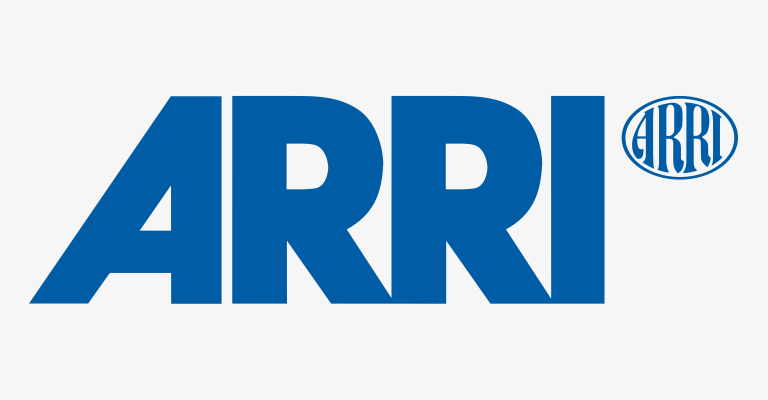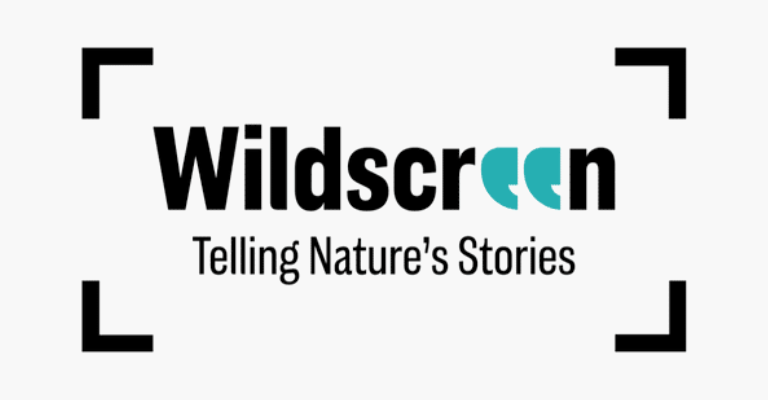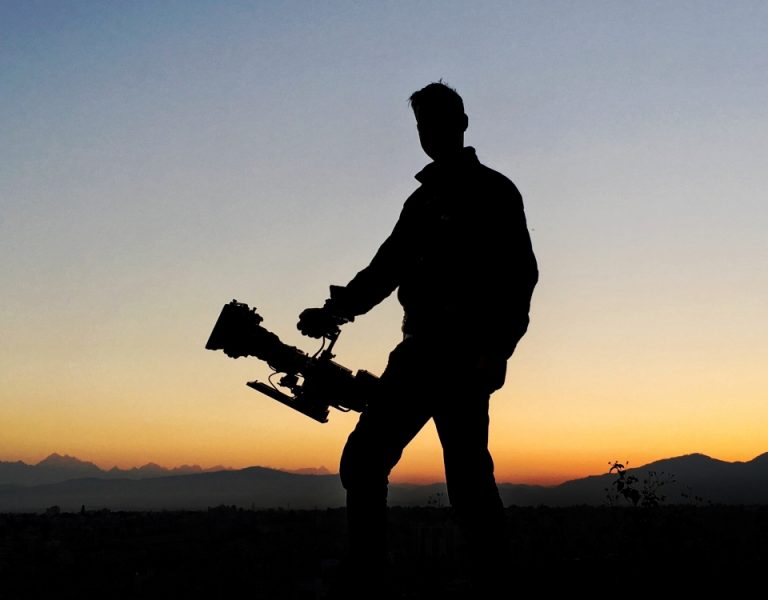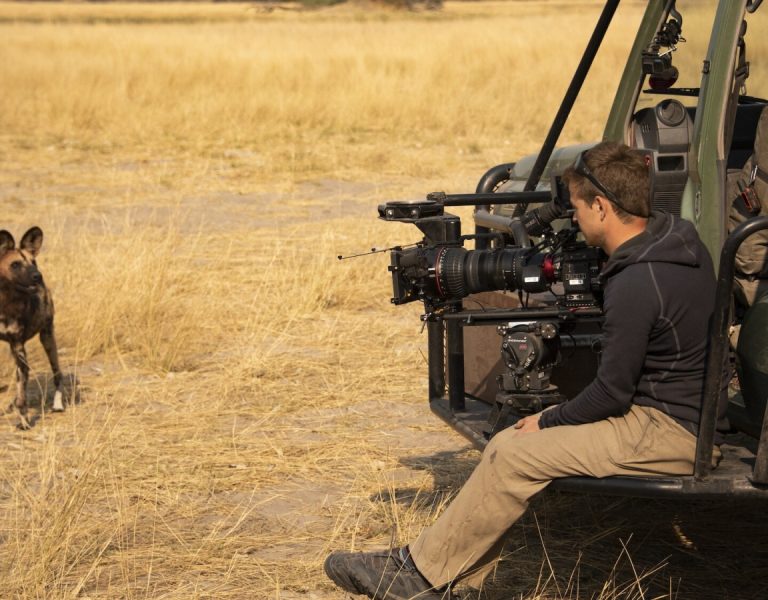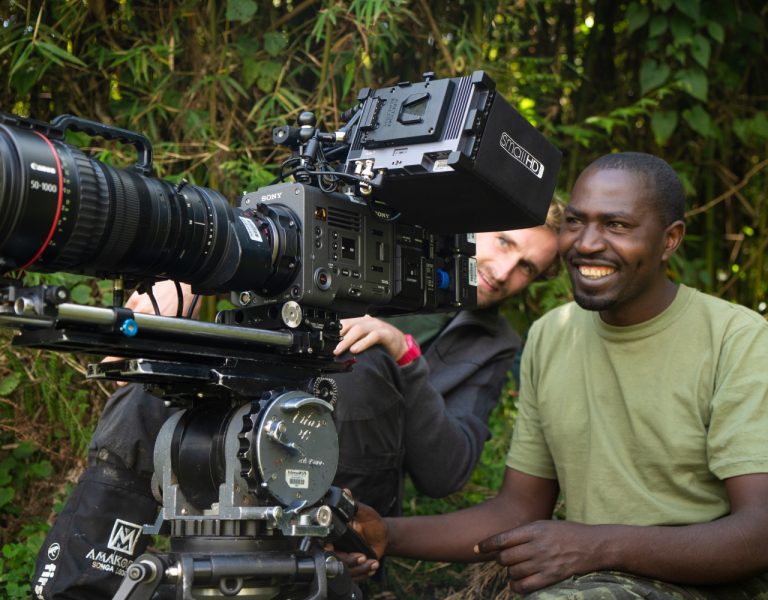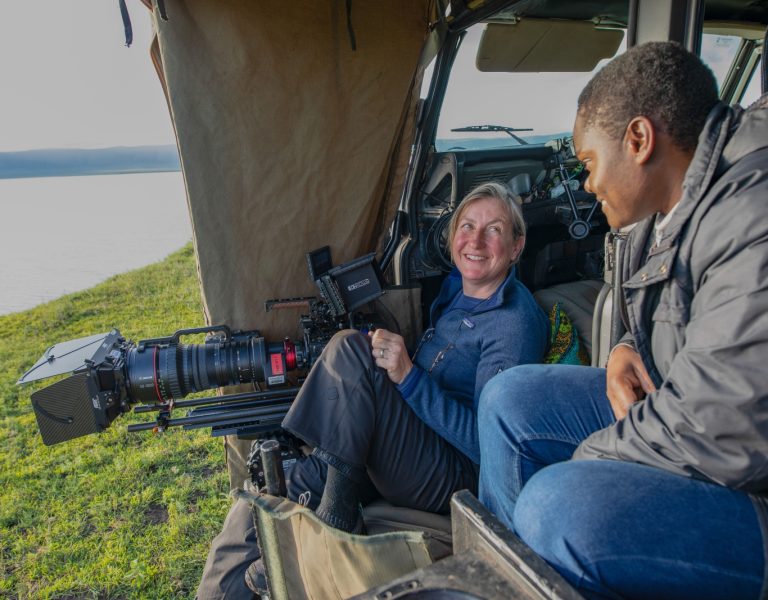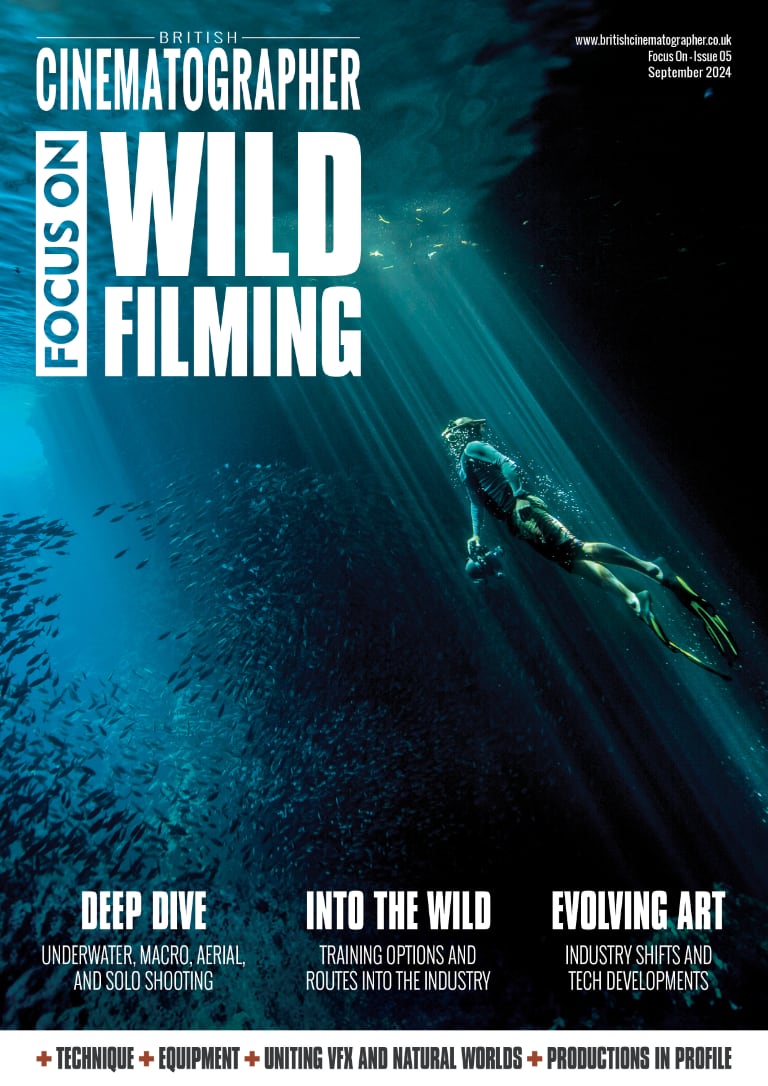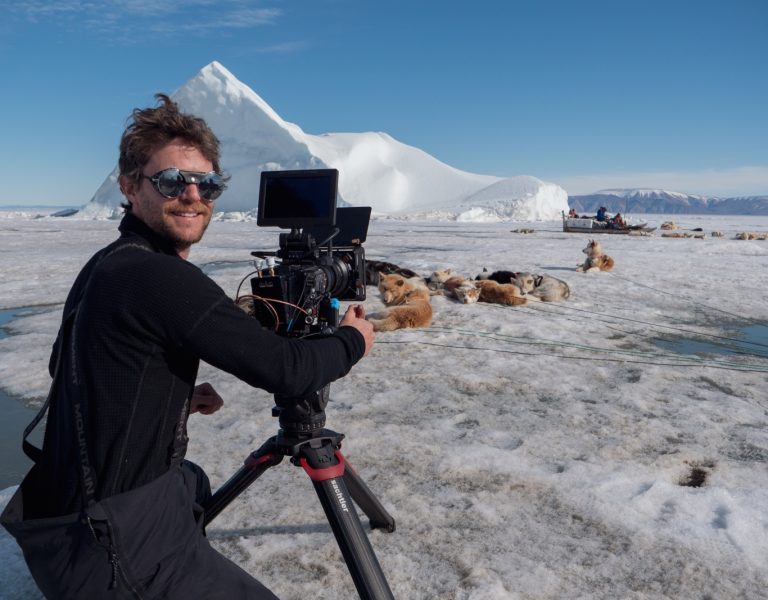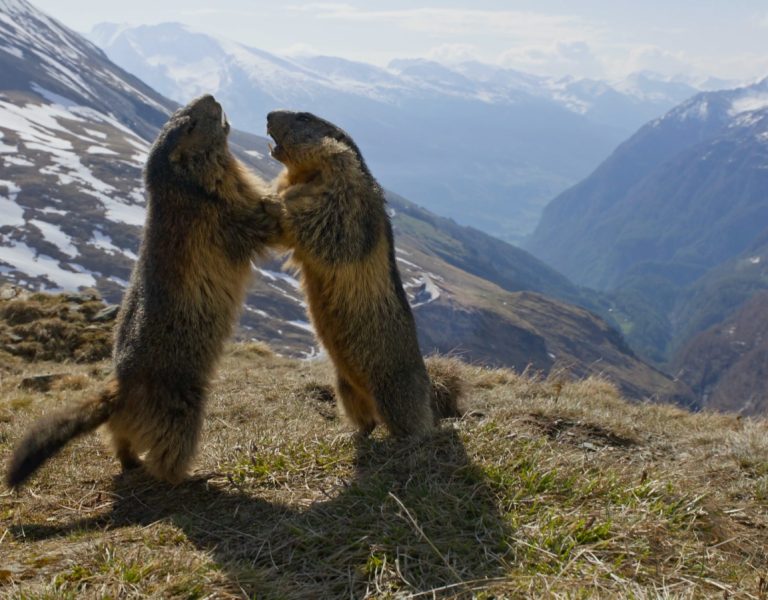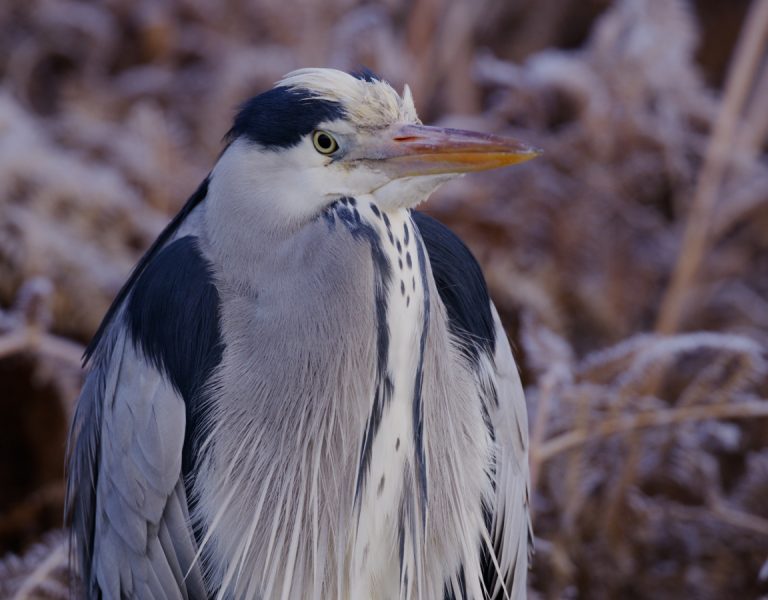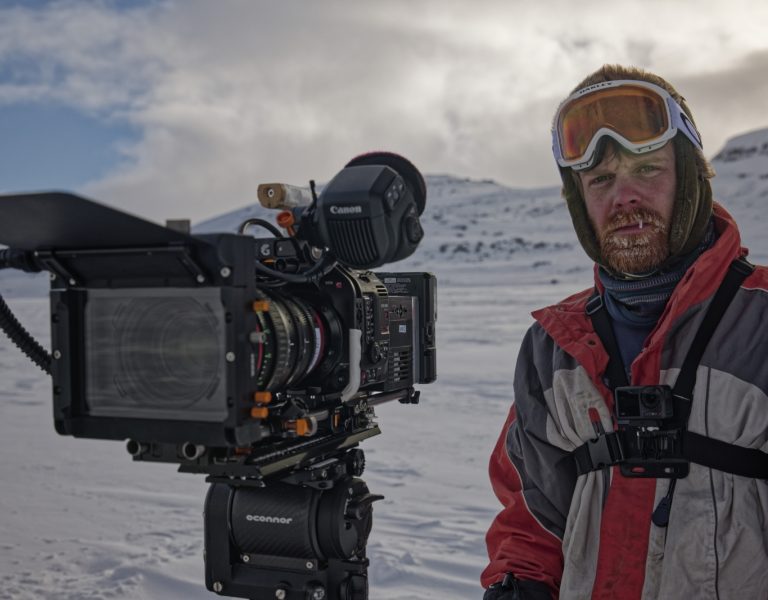SECOND NATURE
Some of the cinematographers behind Planet Earth III reveal their techniques to capture the big wild world in all its glory.
For wildlife cinematographer John Haskew, any filmmaking, including shooting the natural world, is “all about the story and engaging and educating the audience”. Immersing the viewer in the world of the subject, “whether a locust or an elephant” is key.
The “Humans” episode of Planet Earth III – for which Haskew filmed sequences of locusts and elephants at night and was directed by Fredi Devas – aimed to demonstrate the human impact on wildlife and their habitats including human-made climate change around the world.
For the locust story, the filmmakers wanted to portray the marching army of locusts in northern Kenya as an extraordinary wildlife spectacle as they increased in number and strength. They also needed to show the effect of the swarms on local communities. “The locust swarms were occurring at a time when crops had just been planted, and in a region where millions of people struggled with food In the elephant story, bull elephants venture to fields of tomatoes to feed and come into conflict with local farmers trying to protect their crops. Haskew, and fellow cinematographer Neil Anderson, needed to show the perspective of this conflict from the elephant and the farmer, and the measures taken to resolve it. The elephant sequence was directed in the field by Charlotte Bostock with support from Niall Stopford.
“For both sequences, we wanted to adopt an immersive visual approach that could engage the audience in the story,” he says. “We wanted to move with the locusts and rangers who were trying to move the elephants on.”
To introduce movement and allow more immersion into the scene for the audience, different gimbal and slider setups were used, achieving different looks for the elephant and locust sequences. The light and manoeuvrable camera and gimbal rig allowed Haskew to move with the locust swarms and local communities.
As the elephant filming was exclusively at night, Haskew and Anderson needed to use cameras that were sensitive to low light were essential. To be immersive and close to the action, wide-angle lenses were selected and low aperture lenses allowed as much light as possible into the camera.
The main challenges faced included getting close to the subjects. The locusts could move tens of miles every day, meaning keeping up with the swarms and finding appropriate settings to film was challenging. “It was equally difficult filming the elephants at night, wanting to be immersed in the action but also needing to maintain a safe distance,” he says.
Coastal capture
Persistence is an essential quality when shooting wildlife and filmmakers working in this area are often required to spend long periods in the field. “You need to spend as much time as you can with the animals, from sunrise to sunset, with maybe a short break in the middle of the day when the light is bad and animals are less active,” advises Simon De Glanville, who captured the marine hunting terrestrial garter snake sequence for the “Coasts” episode.
“You never really know when the key behaviour or something unexpected will happen, so you need to be capable of keeping your attention with the animals.”
Many cinematographers worked across the episode, with De Glanville shooting the topside behaviour of the western garter snakes, additional photography by Tom Osborn and underwater cinematography by Sam Lewis. While Nick Easton directed the episode, the garter snake sequence was field directed by Estelle Cheuk – a filmmaker De Glanville praises for being “fastidiously organised but also very adaptable” – key qualities when directing wildlife.
“You need to cleave to the story as commissioned as much as you can, but as the actors are wild animals there is always a requirement to modify the story to reflect the circumstances you find in the field,” says De Glanville, who believes a successful collaboration between the director and DP involves endlessly honing the story to accommodate the facts on the ground. “You often end up with something better than the story conceived prior to the shoot. For example, if there is a storm, you might incorporate it into the sequence.”
While “Coasts” focuses on animals living on the world’s coastlines, the sequence De Glanville shot related to a highly adaptable species of snake that has learned to hunt fish in the open ocean on Saturna, an island off the coast of Canada. “This is very unusual behaviour for terrestrial snakes,” he says. “They are unable to see under water, but have somehow become very proficient at catching marine fish.”
The filmmakers placed great emphasis on developing the lead character to immerse the viewer in the snake’s world. De Glanville wanted to get below the eyeline of the character so the audience feel like they are travelling with it through the environment. But, as he highlights, getting the camera below the eye line is a technical challenge when shooting a snake! To achieve this he used a modular camera that could be rigged in unconventional ways as well as being built up as a full 19mm package for long lens.
The long pre-roll options of up to 30 seconds the camera offered was a great advantage when shooting the natural history production: “This means you can wait for a behaviour to happen before running the camera, allowing you to keep your rushes tight and avoid terabytes of wasted storage.”
For topside filming of the snakes De Glanville used a 50-1000mm zoom, allowing detailed shots from a sufficient distance to avoid disturbing the animals. At the other end of the spectrum, he hired a specialist macro relay scope with a 45 degree prism at the end and a range of taking objectives (5mm, 12mm, 16mm, 10mm). “This allowed me to get the lens right at ground level, so visually it felt you are in amongst the seaweed, travelling with the snake,” he adds. “As with all probes, the nodal point is right at the receiving end of the lens array, so when you pan the camera it looks like a track and when you tilt it appears as though the camera is jibbing. This allowed us to create the feeling of travelling with the snake, while keeping the camera mobile.”
When looking for solutions to overcome the difficulty of getting close to the snakes, De Glanville discovered if he anticipated their route to the sea he could place the camera in their path. If he stayed very still they would sometimes glide past and by panning the scope with them he could track alongside.
The probe solved the problem of getting the camera low enough for the wide angle shots, but capturing low-angle telephoto shots was the real challenge as he was filming on rock so digging a hole was not possible. To overcome this he created a rig to under sling the camera. “I inverted a set of legs and using a World Cup bowl adaptor I could hang the camera underneath it,” he explains. “This allowed me to have the camera just a couple of millimetres above the ground, so I could get very low-angle 1000mm shots of the snakes.”
Natural instinct
When shooting the “Extremes” episode – directed and produced by Theodorable Webb – cinematographer Luke Nelson Webb wanted to push the boundaries from a technological and cinematographic perspective. He shot around 40 percent of the episode, with cinematographers John Shier, Barrie Britton, Ryan Deboodt, Peter Cayliss, to name but a few, capturing the rest.
Nelson’s approach is “clean and uncomplicated but dynamic, adopting a classic rule of thirds that leaves room for unexpected behaviour and occasionally some centre punching”. Enjoying working with moving camera systems, he also often incorporates dynamic work from the ground and air.
As with documentary work of this nature, it is not possible to foresee what is achievable at the level required until on location. “Rather than jumping straight into mega close-ups and cinematic shots of animals, we go for the building blocks first and then add our touch, cinematic flare and nuances of style if time and the animals allow,” he explains. “If you’re good at what you do and get lucky enough, you might be able to spend a lot of time crafting the sequence and getting extra beautiful details that add to the story and aesthetic.”
The varying environments and extreme situations required specific cameras and saw the filmmaker use small remote triggered cameras hidden in the dens of animals through to cameras shooting sand blowing in the wind and mobile phones shooting behind-the-scenes. Most equipment was chosen according to whether it enabled them to capture what was needed in the least disturbing manner. The varying frame rates some cameras offer at high resolution along with modular set-up and affordability were also invaluable.
“Paired with the right lens, the crop factor on some cameras can work to our advantage in terms of getting tighter shots with ultra telephoto lenses,” he says.
Nelson often uses bespoke rigs created by dedicated teams such as drones rehoused into remote cameras through to lightweight jibs that can be hiked into the mountains. He once used a rig created by the BBC that housed a camera he could control and power via remote ethernet cable from a hide over 60m away.
One of his specialist areas is capturing sequences from the air and he has seen an increasing focus on shooting perspectives from this viewpoint. “With advancements in drone technology we really are able to see the wild world more intimately and like never before.”
Nelson often works in places that are sensitive to the presence of people. When shooting “Extremes” the team needed to light the inside of a cave the size of multiple football pitches with equipment that had to be hiked to location on a two-day trek. “The area was sensitive – a cave thousands of years old cannot suddenly cope with a team of people running around trying to adjust lights in multiple places – so we had to leave all the usual combo stands, C stands and HMIs behind and think of a more maneuverable approach. So we lit the cave from a drone.”
Filming a snow leopard for one of the first times from the air as it travelled across rocky mountainous terrain in southern Mongolia was another sizeable undertaking. The animals predominantly move around and travel at night and bunker down in the shade during the day to conserve energy.
“We were in a massive mountain range trying to film an animal that’s almost impossible to see doing something it prefers to do at night, and far away from the disturbance of people,” he says.
The solution was relying on the eyes and tracking skills of a local herder and dignitary for The Snow Leopard Trust, Buren Nyam. He spotted them at a distance of almost 1km with the help of a telemetry – a radio collar fitted to the animals neck. “Buren pointed them out to me on the screen of my drone – they were still pin head size from that distance. As we stood huddled and crouched out of sight of the leopards, we watched a family running along a rocky ridge line rim lit by the last golden rays at a moment we least expected,” he says. “It’s wild to think none of us saw those leopards with our naked eye, but the local tracker could. These problems are often best resolved by people who know the environment extremely well – the real locals.”
–
Words: Zoe Mutter
